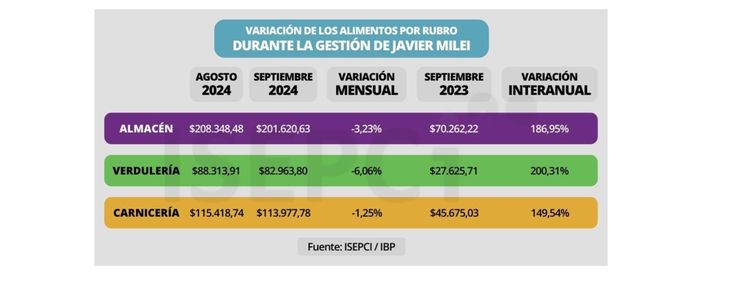E-commerce: two-thirds of companies predict sales growth
According to a study by the Argentine Chamber of Electronic Commerce (CACE), during the first half of the year, online commerce recorded a turnover of $8,555,918 millionwhich marked an increase of 248% compared to the first half of 2023.
In any case, the figure meant 102.7 million purchase orders, only a 1% increase compared to the same period of the previous year. The average ticket per order was at $83,256.
Likewise, during the first half of the year the online channel increased its participation in total sales, from 15% to 18%. In fact, 5 decade 10 Companies consider that they grew this way more or the same as in the physical channel.
When looking at the best-selling categories in terms of units, the top 3 is made up of Food and Drinks, Tools and Constructionand Home, Furniture and Garden.
“E-commerce is consolidating. We point out that the 65% of the companies surveyed consider that electronic commerce activity it will be better that in the second half of 2024,” he says. Gustavo Sambucettipresident of CACE.
However, consider that the greatest fear In the comparison second semester 2024-2023 it will be that “for this time there was a lot of encouragement to consumptionlike the quotasand the same need to buy compared to the level of inflation,” highlights the head of the entity.
If income suffered a sharp cut during the first half of the year, How did electronic purchases grow? For Sambucetti, promotions with virtual wallets and the quotas had their leading role: 8 decade 10 companies carry out card financing and the vast majority did so in 6 installments or less.
Likewise, it is a strategy that is also applied in physical stores. The difference is, according to the head of CACE, that the online channel “grows in times of economic upheaval” or when “there are expectations of devaluation”, a situation that has continued throughout the year and counting. Its use is also intensified when “you have to make the budget work” comparing products and prices.
Retail sales remain in negative territory, but the decline is shortened
The picture is different in retail sales through the physical channel. For the Argentine Chamber of Medium Enterprises (CAME), fell 5.2% in Septemberalthough the fall fell for the third consecutive month.
For the entity, price stability allowed it to plan “very aggressive liquidations” in items such as footwear, clothing and home textiles, and long term installments They contributed to carrying out operations in other branches, such as appliances, electronics, IT and furniture.
Even so, the final movement was less than last year and also that of August, which in itself “They were bad months”. “In the analysis by category, the seven sectors evaluated again had decreases compared to the same period in 2023,” warns CAME in its latest report.
C56DF4B2-82BF-479A-9582-4E8051E388A6.jpeg
In supermarkets, consumption does not rebound: September would have marked another decline
On the contrary, the surveys in supermarkets and self-service they do not maintain auspicious signs for the end of the year.
According to a preview from the consulting firm Scentia, September once again marked a drop in consumption in large establishments: the year-on-year decrease in the first three weeks of the month was around 18%.
Meanwhile, supermarkets calculate that the accumulated decrease until this month revolves around 12%either 13%.
The data is in line with the consulting firm’s latest survey, which marked a 17.9% drop of sales in August and a cumulative 11.9% in the year.
This level of sales for the consulting firm Analytica is “extremely low”, in fact, the average level for this year It is the lowest of the entire historical series that begins in 2017. In parallel, Self-service sales are the lowest since September 2019.
Meanwhile, supermarkets are betting on discounts and promotionsboth 2×1 and 50% discount on the list price, to support consumption.
In turn, large businesses are betting on summer and the dates of meetings and meetings to reactivate the sale of alcoholic beverages and snacks, which marked 24.3% and 31.2% respectively.
Consumption in popular neighborhoods denotes the worst side of the adjustment
Finally, it remains to analyze what happens in neighborhood businesses, where it is found around the 70% of consumption of essential goods.
Isaac Rudniknational director of the Institute for Social, Economic and Citizen Policy Research (ISEPCI), the drop in food sales caused a drop in prices of 3.2%.
94BBED0D-7A7D-4194-A11B-70A24C111B51.jpeg

According to the organization’s calculations, in August a family of four needed $412,081 to cover their basic food needs, while in September they specified $13,518 less.
However, the same family should have recorded an increase of 177% to buy the same amount of food compared to September 2023.
Between one year and the next, prices in the warehouse rose 186.95%fruits and vegetables 200.31%, and the meats 149.53%.
At the same time, it expanded the gap between the increase in unrecorded wages –which is mostly received by the heads of households of the poorest households- and product increases that make up the Total Basic Basket.
For all this, Rudnik reflects the current economic situation in the popular neighborhoods in this way: “the result of the biggest fiscal adjustment in historycan have no other sign than a general increase in poverty and destitution, a situation that affects all ages.”
Source: Ambito
I am an author and journalist who has worked in the entertainment industry for over a decade. I currently work as a news editor at a major news website, and my focus is on covering the latest trends in entertainment. I also write occasional pieces for other outlets, and have authored two books about the entertainment industry.




